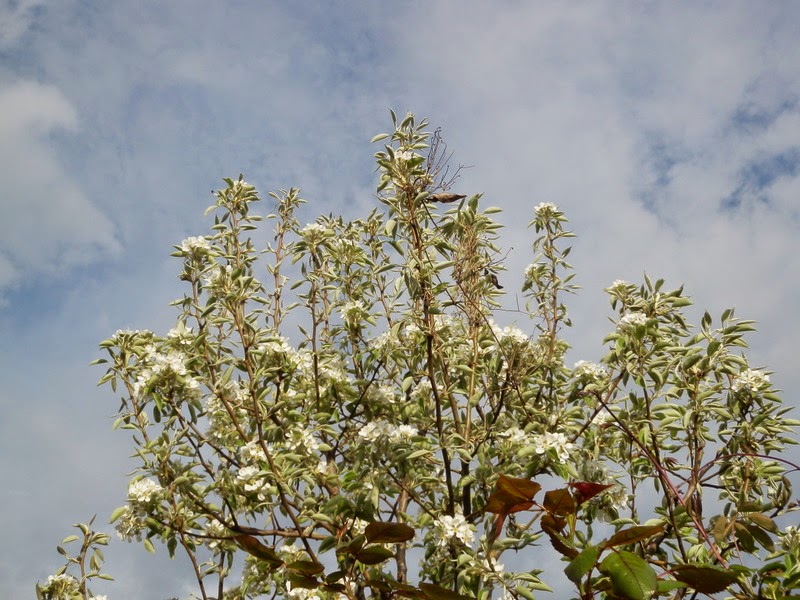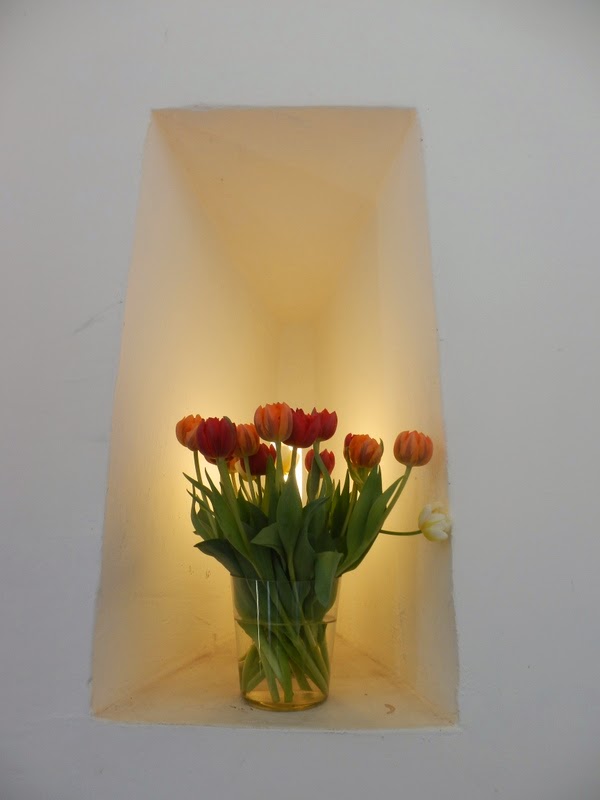Mijn verzameling aurikeltjes bloeien nu volop in de kas en verspreiden een heerlijke geur. Ongeveer 20 jaar geleden kocht ik mijn allereerste Primula auricula, en plantte het in de tuin dichtbij de keuken. Toen het ging bloeien ontdekte ik dat de bloemen lekker geurden, maar een ieder die ik dit vertelde moest wel door de knieën om het te kunnen ruiken. Omdat het eigenlijk een alpine plantje is en niet zo in mijn tuin past, heb ik het toen weer opgegraven en in een pot gezet.
Op mijn regelmatige tochtjes naar kwekerijen kom ik ze maar zelden tegen, als ik een enkele keer een andere kleur ontdek koop ik een plantje. Zodoende heb ik inmiddels een kleine collectie. Door het lezen van tuinboeken o.a. over tuinen in de Victoriaans tijd, kwam ik er achter dat er heel mooie show exemplaren bestaan en dat ze deze in Auricula theatertjes tentoonstelden. Vooral die met bepoederd blad waren gezocht. Daarvan heb ik er nu één en die wil nog niet erg groeien.
De Primula auricula is minder moeilijk te kweken dan ik had gedacht, ik heb er oude boekjes over gevonden en gelezen maar ik behandel ze toch op mijn eigen manier en dat gaat prima.
In de zomer staan ze buiten op een etagère en hebben ze, op af en toe water geven, weinig aandacht nodig.
Eind oktober/november haal ik ze binnen in de kas, haal al het lelijk blad eraf en deel sommige planten. Door ze op deze manier te vermeerderen, heb ik een flink aantal planten gekregen. Eind februari/begin maart ga ik ze allemaal nog eens langs, geef sommige planten nieuwe eenvoudige potgrond en wat gedroogde koemest.
Als de groei begint, krijgen ze ook meer water en dan bloeien ze in april dus vanzelf. Na de bloei gaan ze weer naar buiten op de etagère.
In the greenhouse my collection of Primula auriculas are in full bloom now and spread a lovely fragrance. About 20 years ago I bought my first Primula auricula and planted it in the garden near the kitchen. When flowering started I discovered the lovely fragrance but every one that I told this had to bend the knees very deeply to sniff. Because it is actually an alpine plant and does not suit in my moist garden I dug it up and put it in a pot.
On my regular visits to garden centres or nurseries I rarely see them, and when I discover one of a different colour once in while, I buy a plant. So I have now a small collection. By reading gardening books a.o. about Victorian gardens, I found there are very nice show specimens which were showed in auricula theaters. Especially those with powdered leaves were wanted. I have one but just this one won´t grow.
The Primula auricula is less difficult to grow as I thought, I found and read old books but I treat them in my own way and that works perfect for me.
In summer they are outside on the etagere and don´t need much attention, except watering.
End of October/beginning of November I take them to the greenhouse, clear them of dead leaves and divide plants if necessary. By multiplying the plants in this way, I got rather a lot of new plants.
End of February/beginning of March I take all plants in hands again, give some of them new potsoil and all of them a bit of dried cow manure.
When they start growing, they get more water and without any problems they are in bloom end of April. After flowering they go outside on the etagere again.
`Their gold, their purples, scarlets, crimson dyes,
Their dark and lighter-haired diversities,
With all their pretty shades and ornaments,
Their parti-coloured coats and pleasing scents.....
In double ruffs, with gold and silver laced,
On purpose crimson, and so neatly placed.`
- From Some Flowers, Vita Sackville-West -
In de kas heb ik mijn oude keukentafel gezet waar ik af en toe ga zitten om te genieten van mijn plantjes en een kopje thee.
In the greenhouse I put my old kitchentable so I can sit for a while to enjoy my plants and a cup of tea.
De lelietjes van dalen en de bluebells bloeien ook al weer.
The lillies of the valley and the bluebells are already flowering too.
Hij zal er eens niet bij zijn / He is where I am.






































































